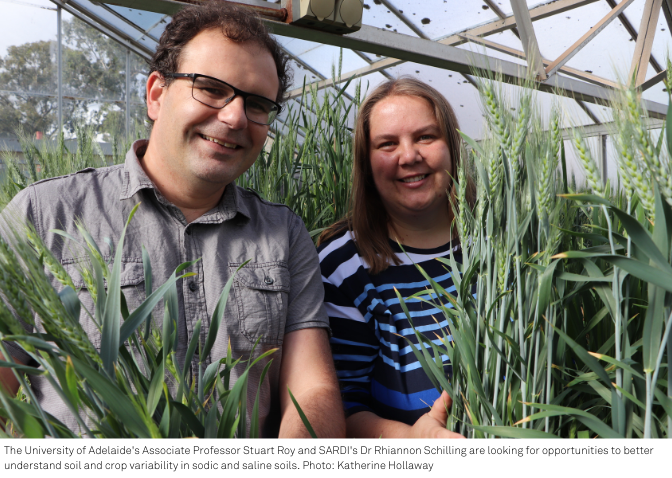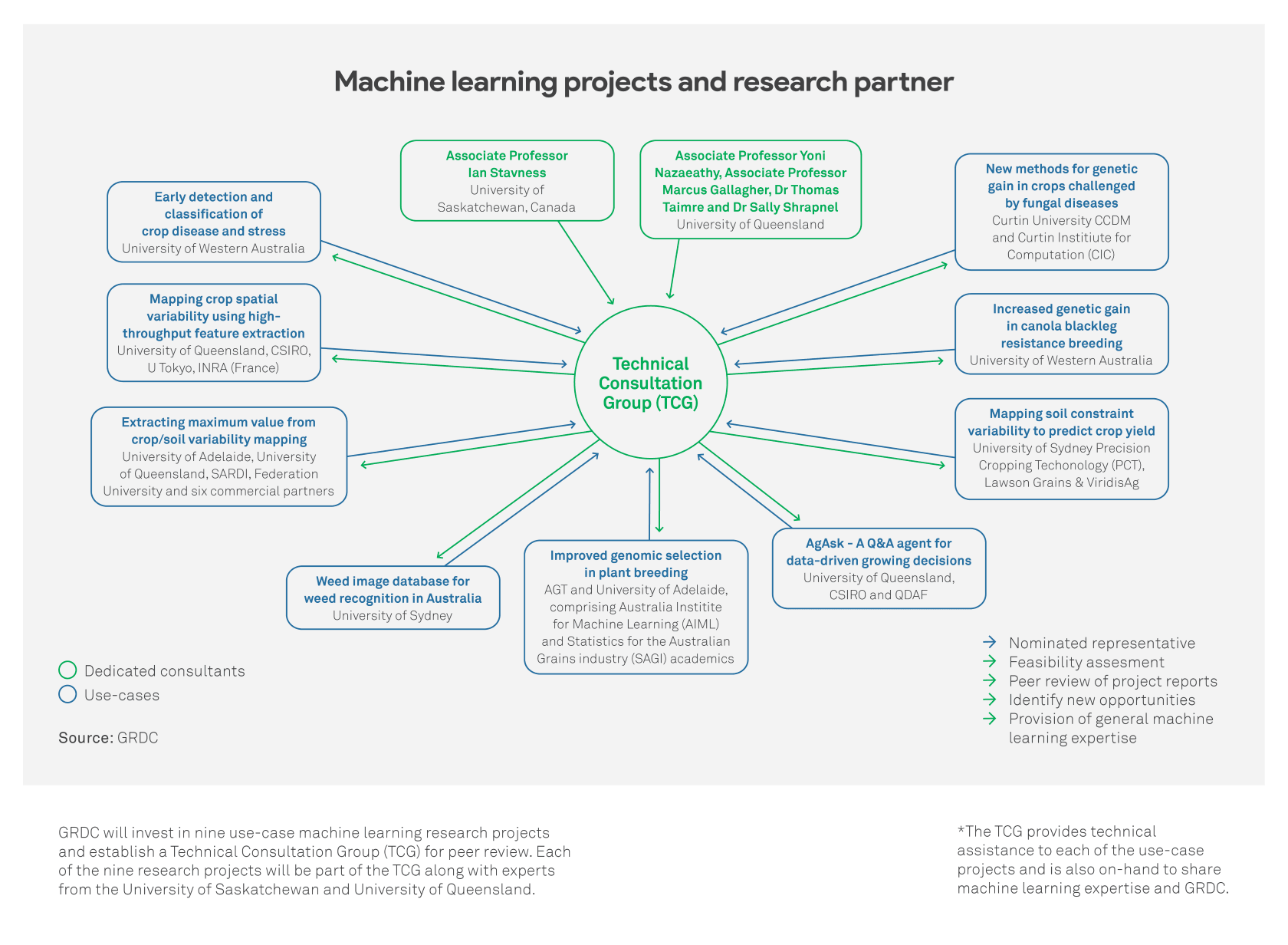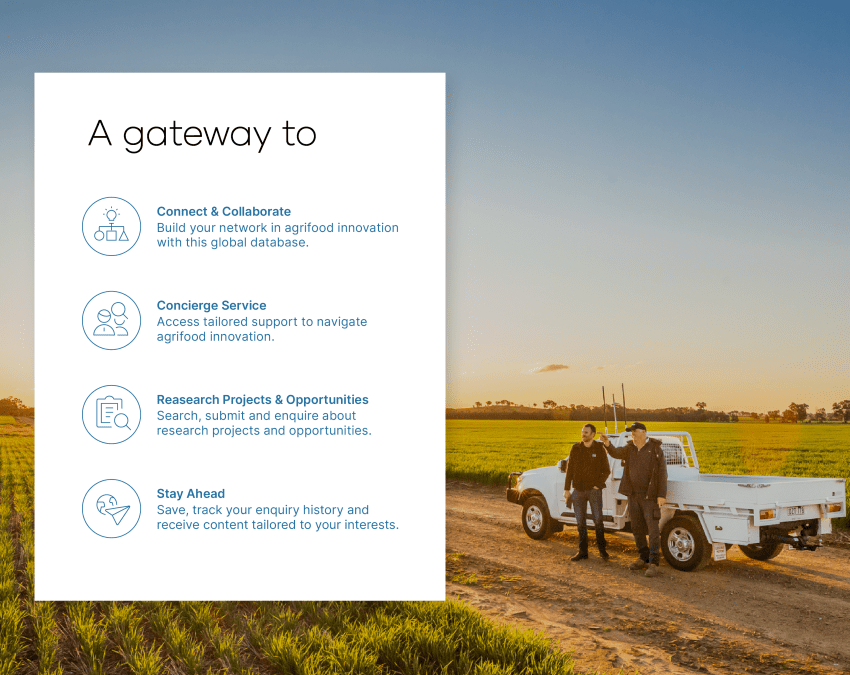
Machine learning drives profitability for Australian grain growers
Australian grain growers are set to profit from a multi-million-dollar global investment in machine learning, led by Grains Research Development Corporation (GRDC). Here we explore nine use-cases designed to boost value in the paddock. Some already have commercial sector involvement in place but for others GRDC will seek deployment through commercial avenues using platforms like growAG..

When precision agricultural researchers from Ohio State University set out to see how much data they could collect from a single stalk of corn, it totalled 18.5 gigabytes. The data for a 40-hectare field would be around 60 million gigabytes.
With so much data available, it should be possible to solve some of the grain industry’s most intractable problems. Now a $5.1 million global investment research project by the world-leading Grains Research and Development Corporation (GRDC) is aiming to do exactly that, testing machine learning in nine use-cases to drive profitability gains for Australian growers.
RELATED: GRDC looks to double the grains industry’s current $15 billion value by 2030
Machine learning is a form of artificial intelligence that teaches computers to think and learn in a similar way to humans except on a stratospheric scale by exploring huge amounts of data and identifying patterns within it. The model or neural network that results can then use what it’s learned to make predictions, based on new data, essential for today’s agricultural R&D.
Related organisations


Meeting of the best minds in the world
Tom Giles, GRDC’s Senior Manager of Enabling Technologies, revealed the project has attracted some of the best minds in machine learning and grains research both in and outside Australia. Included in the full list are leading universities, commercial companies and institutions such as the CSIRO, the Australian Plant Phenomics Facility, Australian Grain Technologies, Precision Cropping Technologies, Lawson Grains and Viridis Ag.
“We’re really happy about the project applicants we’ve secured,” said Tom.
“The investment is 100% focussed on growing profitability whether [that’s] developing new ways to derive soil and crop variability maps, predicting yield, understanding responses from soil types under different system constraints, or making better use of crop genetic data to breed new varieties, eradicating pests and diseases and delivering information.”
The nine-use cases (below) will use big data to examine issues including crop genetics, soil variability mapping, pests and diseases and information delivery.
Providing peer review for each use-case is a Technical Consultation Group, established by GRDC, made up of members from each of the nine use-case projects, plus dedicated consultants from the University of Saskatchewan in Canada and the University of Queensland.
“It means we are able, as a cohort, to leverage all those great minds in terms of solving problems that individual groups might encounter,” said Tom.

Nine use-cases to pressure test machine learning potential
AgAsk: Q&A agent for data-driven growing decisions
Aim: To help build a question and answer system where a user can ask a question and the machine learning algorithm will sort through thousands of pieces of information to locate what it believes is the best possible answer.
- The University of Queensland, CSIRO and the Queensland Department of Agriculture and Fisheries
Extracting maximum value from crop/soil variability mapping
Aim: To help growers make better decisions when they have soil constraints or varying conditions across their paddocks. Machine learning will enable more detailed analysis of data already generated with a focus on soil factors that impact on grain yield
- The University of Adelaide, The University of Queensland, SARDI, Federation University and six commercial partners
Weed image database for weed recognition in Australian grain production systems
Aim: To create an open source weed image library and make weed recognition data freely available to the weed control industry. This will provide large global companies with access to images of weeds important in our environment and help to accelerate adaptation of technology for Australian growers.
- The University of Sydney
Improving genetic gain in genomic selection in plant breeding
Aim: To push the boundaries in terms of breeding varieties with better yield, quality and resistance to disease.
- AGT and University of Adelaide, comprising of Australian Institute for Machine Learning (AIML) and Statistics for the Australian Grains Industry (SAGI) academics
Mapping crop spatial variability using high throughput feature extraction
Aim: Improve and automate crop monitoring on a large scale to assist growers in making replant decisions while improving yield estimation.
- University of Queensland, CSIRO, U Tokyo, INRA (France)
New methods for genetic gain in crops challenged by fungal diseases
Aim: To identify genetic markers associated with fungal infection resistance to improve disease-resistant breeding in wheat, canola, lentil and chickpea crops.
- Curtin University CCDM and Curtin Institute for Computation (CIC)
Increased genetic gain in canola blackleg resistance breeding
Aim: To crack the nut of blackleg resistance by training neural networks to associate blackleg resistance phenotypes with gene expression in canola using whole genome sequence data and single-nucleotide polymorphism data.
- University of Western Australia
Mapping soil constraint variability to predict crop yield.
Aim: To better map and understand the impact of soil constraints on yield and predict how they might respond in the future.
- University of Sydney, Precision Cropping Technologies (PCT), Lawson Grains & ViridisAg
Early detection and classification of crop disease and stress
Aim: To use deep learning to detect crop stress, disease or pest damage. The secondary aim is to develop a crop agnostic tool to alert growers and help them determine the best way forward.
- University of Western Australia
Finding and solving problems before farmers even notice them
GRDC’s portfolio features hundreds of investments in research, explained Tom, but there’s a lot of excitement about what machine learning has to offer the grains industry. “As part of the process, we did our due diligence on the specific use-cases in terms of what might have the most value and impact for growers and that dictated what we went ahead with.”
RELATED: See all GRDC reserach projects listed on growAG.
“At the end of the two-year project, the aim is to make outputs available for use by growers,” Tom explained. This could be in a variety of forms such as the development of models to form the basis of software or new crop varieties.
-crop-672x478.png)
Commercial opportunities available
All partners were encouraged to consider commercial and international linkages when submitting applications, as there were obvious benefits, Tom explained, in having commercial sector involvement to help shore up the path to market for the outcomes.
“The outcomes are very much use-case specific but overwhelmingly there’s a huge amount of benefit in applying this technology to this research. One of the biggest advantages is that we’ll help accelerate use of the technology and understanding of its use more broadly. However, our intention is absolutely that each individual use-case will generate value in its own right.”
Some projects already have commercial sector involvement in place but for others GRDC will seek deployment through commercial avenues using platforms like growAG.
Those commercialisation plans will be reviewed in the next month or two, added Tom, so if parties are interested, it’s a good time to reach out through the resources at growAG.
Enjoyed this story? Sign up for our newsletter here and stay up to date with our latest stories, news and opportunities.
-crop-850x675.png)
Looking for engagement?
Showcase your commercialisation opportunity today.
Talk to our team to discuss how growAG. can connect your innovation to industry.
Have questions? Find answers to our most frequently asked questions on research projects, commercial opportunities, organisations and more.
